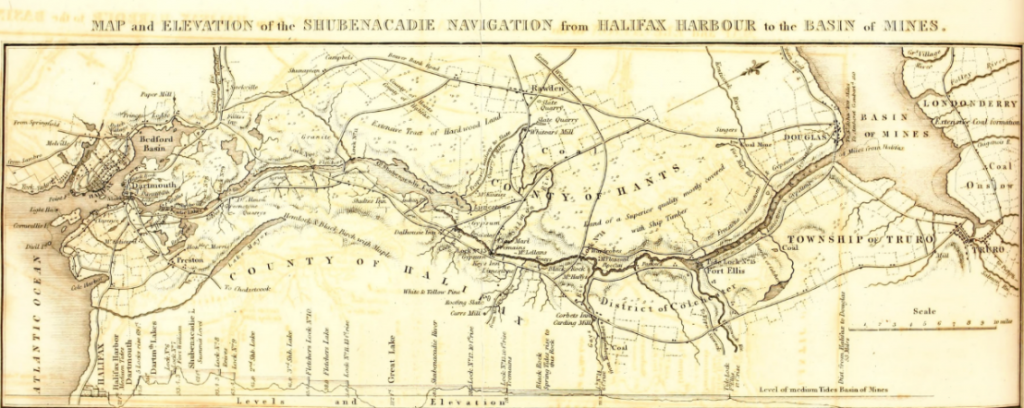
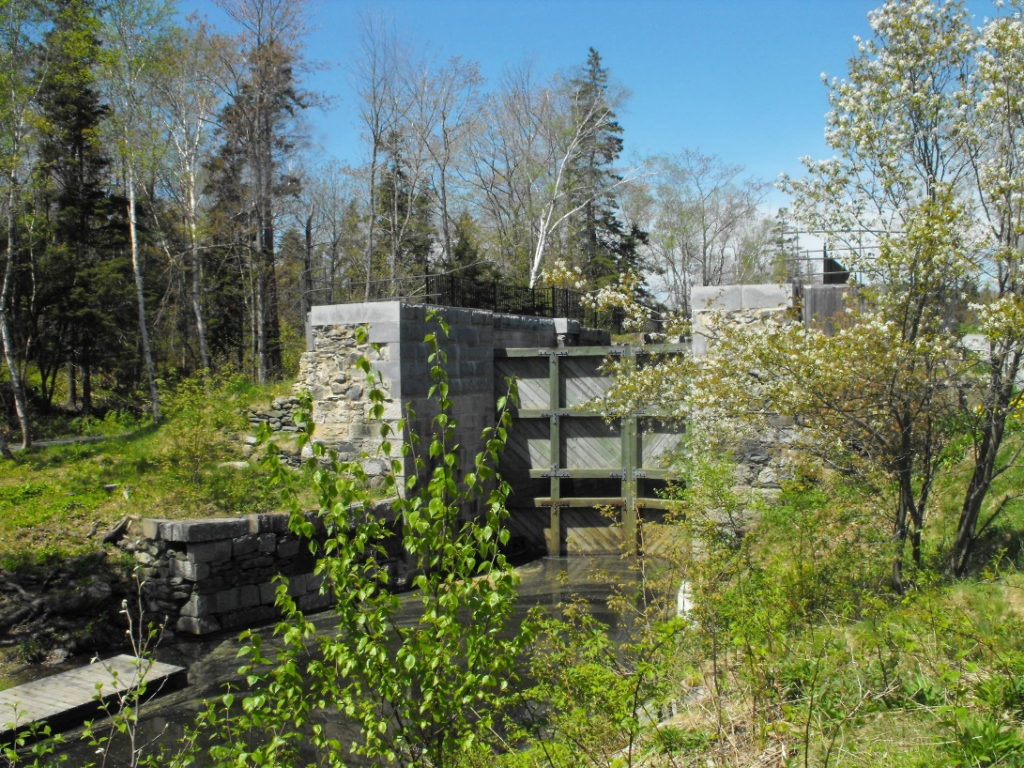
Site Location: The ends of the Shubenacadie Canal are at Dartmouth, NS, Lat.: 44° – 39’ – 36” N; Long.: 63° – 33’ – 36” W. (GPS: 44.66, -63.56) and Maitland, NS, Lat.: 45° – 19’ – 12” N; Long.: 63° – 29’ – 24” W (GPS: 45.32, -63.49).
Plaque Location: Lat.: 44° – 42’ – 08” N.; Long.: 63° – 33’ – 15” W. (GPS: 44.70233, -63.55430). From Exit 6 (Micmac Interchange) on Highway 111 in Dartmouth, take Braemar Drive exit, proceed 1.8 km on Braemar Drive / Waverley Road to the intersection of Locks Road. Turn left on Locks Road and proceed 0.7 km to the Shubie Park parking lot. The monument is mounted on a concrete base between the parking lot and the canal near the foot of the stairs from the lower parking lot.
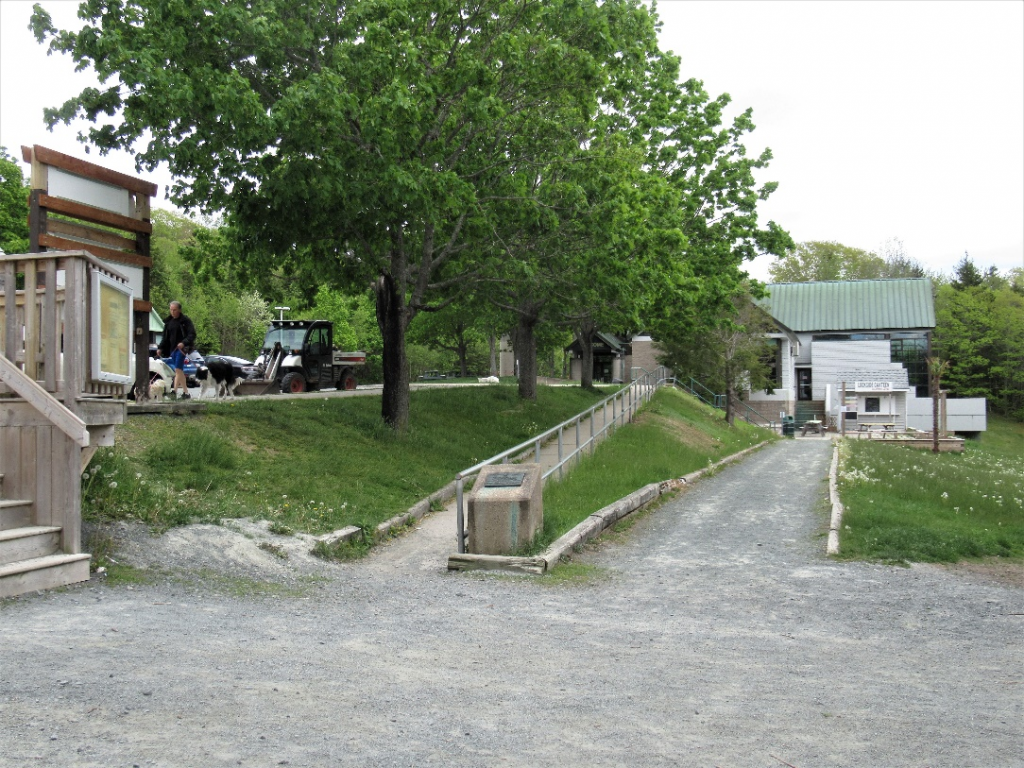
Description: The Shubenacadie Canal was a 114 km (71 mi) navigable water route between Halifax Harbour and the Bay of Fundy. The Shubenacadie Canal Co. started construction in 1826, by contractors John Kidd and Daniel Hoard with Francis Hall as chief engineer, but went bankrupt in 1831. The Inland Navigation Company resumed construction in 1854 and completed the canal in 1861, under the supervision of Charles W. Fairbanks. The canal operations included nine locks and inclined plane marine railways at Dartmouth and Portobello.
The canal was initially successful, providing a supply route to the Waverley gold rushes of the 1860s and to support construction of the Nova Scotia Railway, although profits were marginal. Once completed, the railway offered a reliable year-round service that made the canal uncompetitive. In 1870, the Intercolonial Railway replaced the Waverley draw bridge with a low-clearance fixed crossing that severely limited canal traffic. Canal operations ended in 1871 when the Town of Dartmouth took over the Dartmouth Lakes as a water supply.
The Shubenacadie Canal Commission has been created to maintain and restore the locks. Three locks have been restored and Lock 5, between Fletchers Lake and Shubenacadie Grand Lake, is operational. Portions of the canal are popular recreation areas for hikers, canoeists and pleasure boaters. Interpretive sites for the canal in Dartmouth include the Fairbanks Centre located in Shubie Park and the Marine Railway Flume House below Sullivan’s Pond.
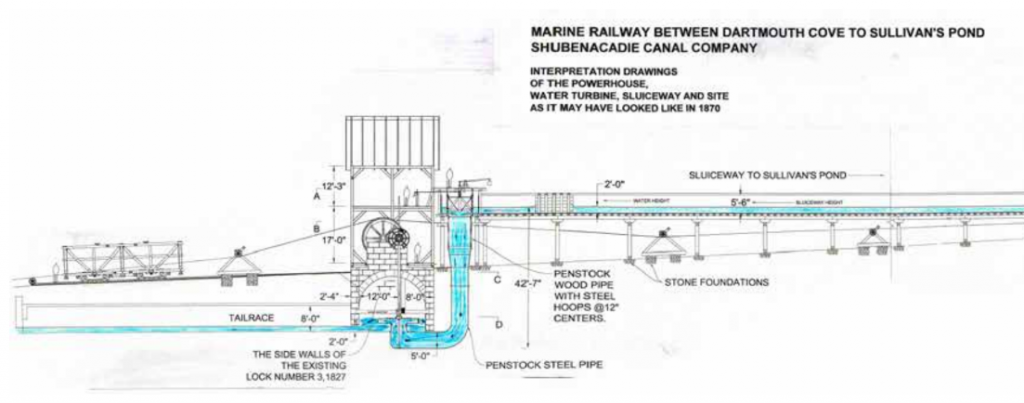
Historic Significance: The Mi’kmaq have used the route for millennia, through a region they called Sipekne’katik (“where the groundnuts grow”) that was transcribed by French settlers of the 1600s as Shubenacadie. The Acadians learned of the route from the Mi’kmaq and passed it on to the British.

The 1826-31 lock construction, based on Scottish and English practices of the time, used cut granite stone that was susceptible to Nova Scotia’s numerous freeze-thaw cycles. For the 1854-1861 construction, Fairbanks adopted an American method of building timber-faced rubble lock walls that was less expensive and faster.
All over the world, at this time, inland canals were being replaced by railways.
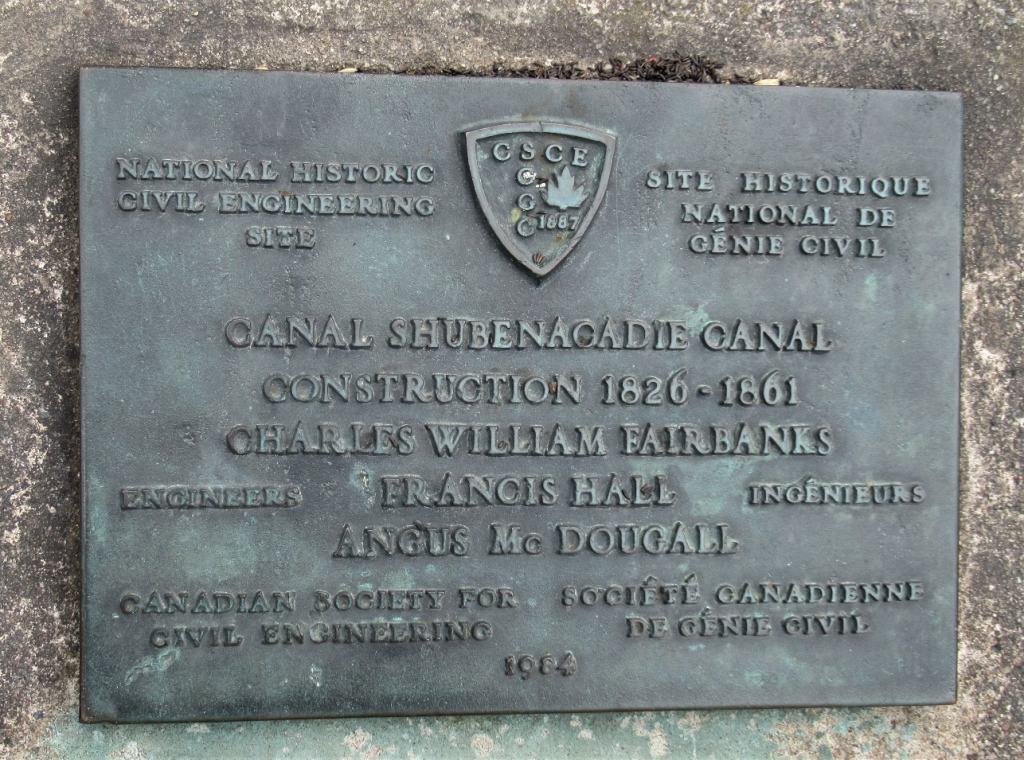
Plaque Wording: National Historic Civil Engineering Site. CSCE. SHUBENACADIE CANAL. CONSTRUCTION 1826-1861. Engineers Charles William Fairbanks, Francis Hall, Angus McDougall. Canadian Society for Civil Engineering. 1984.
SCGC. Site Historique National de Génie Civil. CANAL SHUBENACADIE. CONSTRUCTION 1826-1861. Charles William Fairbanks, Francis Hall, Angus McDougall Ingénieurs. Société canadienne de génie civil. 1984.
Links to Online Documentation:
“Schubenacadie Canal Waterway – Heritage”
“The Inclined Plane Marine Railway of Dartmouth, Nova Scotia” (video).